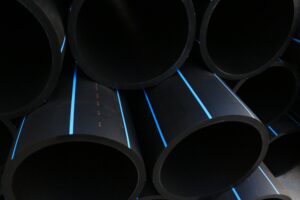Fluid Transfer System: Essential Components and Applications
Introduction
Fluid transfer systems are integral to numerous industrial processes, enabling the safe and efficient movement of liquids and gases from one location to another. These systems are used in various industries, including automotive, aerospace, chemical processing, oil and gas, pharmaceuticals, and food and beverage. They ensure the precise and controlled transfer of fluids, contributing to the overall efficiency and productivity of industrial operations. This blog delves into the essential components, applications, benefits, and future trends of fluid transfer systems.
Essential Components of Fluid Transfer Systems
Pumps
Pumps are the heart of any fluid transfer system, responsible for moving fluids by mechanical action. They come in various types, each suited for different applications and fluid properties:
- Centrifugal Pumps: Widely used for their efficiency and ability to handle large volumes of fluid, centrifugal pumps are ideal for transferring water, chemicals, and other low-viscosity liquids.
- Positive Displacement Pumps: These pumps are used for high-viscosity fluids and applications requiring precise flow control. Types include gear pumps, diaphragm pumps, and piston pumps.
- Peristaltic Pumps: Suitable for handling sensitive or corrosive fluids, peristaltic pumps use a rotating mechanism to squeeze the fluid through a flexible tube, minimizing contamination risks.
Hoses and Tubing
Hoses and tubing are critical for directing fluid flow within the system. They must be compatible with the fluid being transferred and withstand the operating conditions:
- Rubber Hoses: Commonly used for their flexibility and durability, rubber hoses are suitable for a wide range of fluids, including water, oils, and chemicals.
- Plastic Tubing: Available in materials like PVC, polyethylene, and PTFE, plastic tubing offers excellent chemical resistance and is often used in applications involving aggressive chemicals.
- Metal Hoses: Made from stainless steel or other metals, these hoses provide high strength and temperature resistance, making them ideal for extreme conditions.
Valves
Valves regulate the flow of fluids within the system, allowing for precise control and safety. Different types of valves are used based on the application and fluid properties:
- Gate Valves: These valves provide a straight-through flow with minimal pressure drop and are used for on/off control of fluids.
- Ball Valves: Known for their durability and reliable sealing, ball valves are suitable for applications requiring quick shut-off.
- Check Valves: These valves prevent backflow, ensuring that fluids flow in the desired direction only.
- Diaphragm Valves: Ideal for handling corrosive or viscous fluids, diaphragm valves use a flexible diaphragm to control flow.
Filters and Strainers
Filters and strainers remove contaminants from fluids, protecting the system’s components and ensuring the purity of the transferred fluids:
- Particulate Filters: These filters capture solid particles from fluids, preventing clogs and wear in downstream components.
- Activated Carbon Filters: Used for removing organic compounds and odors from fluids, these filters are common in water treatment and beverage industries.
- Oil Filters: Essential in automotive and industrial applications, oil filters remove contaminants from lubricating and hydraulic oils.
Flow Meters
Flow meters measure the rate of fluid flow within the system, providing critical data for process control and optimization:
- Electromagnetic Flow Meters: Suitable for conductive fluids, these meters provide accurate flow measurement without any moving parts.
- Ultrasonic Flow Meters: Using sound waves to measure flow, these meters are ideal for clean and non-intrusive measurement in various applications.
- Turbine Flow Meters: These meters use a rotating turbine to measure flow rate, offering high accuracy and reliability for liquids and gases.
Applications of Fluid Transfer Systems
Automotive Industry
Fluid transfer systems are vital in the automotive industry, used for transferring fuels, lubricants, coolants, and hydraulic fluids. These systems ensure the efficient operation of engines, transmission systems, and other critical components. Specific applications include:
- Fuel Injection Systems: Delivering precise amounts of fuel to the engine’s combustion chambers for optimal performance and efficiency.
- Coolant Systems: Circulating coolant to maintain engine temperature and prevent overheating.
- Brake Systems: Transferring hydraulic brake fluid to apply pressure to the brake pads, ensuring safe and effective braking.
Aerospace Industry
In the aerospace industry, fluid transfer systems are essential for the safe and efficient operation of aircraft. They handle various fluids, including fuel, hydraulic fluids, and lubricants, in applications such as:
- Fuel Systems: Ensuring the reliable delivery of fuel from storage tanks to the engines, maintaining flight performance and safety.
- Hydraulic Systems: Powering flight control surfaces, landing gear, and braking systems through the transfer of hydraulic fluids.
- Cooling Systems: Managing the temperature of critical components, such as avionics and engines, to ensure optimal performance and longevity.
Chemical Processing Industry
Fluid transfer systems play a crucial role in the chemical processing industry, enabling the safe and efficient handling of various chemicals and solvents. Applications include:
- Chemical Distribution: Transferring raw chemicals to different processing units within the plant.
- Reactor Feeding: Precisely controlling the flow of reactants into reactors for chemical reactions.
- Waste Management: Safely transferring hazardous waste materials for treatment and disposal.
Oil and Gas Industry
In the oil and gas industry, fluid transfer systems are essential for the extraction, transportation, and processing of hydrocarbons. Key applications include:
- Drilling Operations: Transferring drilling muds and fluids to maintain well stability and remove cuttings.
- Pipeline Transport: Moving crude oil, natural gas, and refined products through pipelines over long distances.
- Refinery Processes: Handling various fluids during the refining process, including crude oil, intermediate products, and final products.
Pharmaceutical Industry
Fluid transfer systems are critical in the pharmaceutical industry, ensuring the precise and sterile handling of fluids during the production of medications. Applications include:
- Liquid Formulation: Transferring and mixing active ingredients and excipients to create liquid formulations.
- Sterile Processing: Handling sterile fluids in cleanroom environments to prevent contamination.
- Packaging: Filling bottles, vials, and other containers with pharmaceutical liquids in a controlled and precise manner.
Food and Beverage Industry
In the food and beverage industry, fluid transfer systems are used for handling various liquids, including water, juices, dairy products, and sauces. Applications include:
- Beverage Production: Transferring ingredients and final products through different stages of production, including mixing, pasteurization, and filling.
- Dairy Processing: Moving milk and dairy products through processes such as pasteurization, homogenization, and packaging.
- Sauce and Condiment Production: Handling thick and viscous fluids like sauces, dressings, and condiments with precise control and hygiene.
Benefits of Fluid Transfer Systems
Efficiency and Precision
Fluid transfer systems offer high efficiency and precision in handling fluids, ensuring optimal performance of industrial processes. Accurate flow control and reliable operation minimize wastage and improve productivity.
Safety and Reliability
These systems are designed to handle various fluids safely, reducing the risk of leaks, spills, and contamination. Robust components and advanced sealing technologies ensure the reliability and longevity of the systems.
Versatility and Customization
Fluid transfer systems can be customized to meet specific requirements of different industries and applications. This versatility makes them suitable for handling a wide range of fluids, from water and oils to aggressive chemicals and sensitive pharmaceuticals.
Cost-Effectiveness
Efficient fluid transfer systems reduce operational costs by minimizing energy consumption, reducing maintenance needs, and prolonging the lifespan of equipment. This cost-effectiveness makes them an attractive investment for industries.
Environmental Sustainability
Modern fluid transfer systems are designed with sustainability in mind, using energy-efficient components and materials that minimize environmental impact. This focus on sustainability helps industries comply with environmental regulations and reduce their carbon footprint.
Challenges and Considerations in Fluid Transfer Systems
Material Compatibility
Selecting the right materials for components such as hoses, valves, and pumps is crucial to ensure compatibility with the fluid being transferred. Incompatible materials can lead to corrosion, degradation, and system failure.
System Design and Integration
Designing and integrating fluid transfer systems into existing industrial processes can be challenging. It requires careful planning, engineering expertise, and coordination with other systems to ensure seamless operation.
Maintenance and Monitoring
Regular maintenance and monitoring are essential to keep fluid transfer systems in optimal condition. This includes routine inspections, cleaning, and replacement of worn-out components. Advanced monitoring technologies can help detect issues early and prevent downtime.
Regulatory Compliance
Industries using fluid transfer systems must comply with various regulations and standards related to safety, environmental protection, and quality. Ensuring compliance requires thorough documentation, testing, and adherence to best practices.
Technological Advancements
Keeping up with technological advancements in fluid transfer systems is crucial for maintaining competitiveness and efficiency. Industries must invest in research and development to adopt new technologies and improve their systems continuously.
Future Trends in Fluid Transfer Systems
Digitalization and Industry 4.0
The integration of digital technologies and Industry 4.0 principles is transforming fluid transfer systems. Advanced sensors, data analytics, and IoT connectivity enable real-time monitoring, predictive maintenance, and enhanced control of fluid transfer processes.
Sustainable Solutions
The focus on sustainability is driving innovations in fluid transfer systems. Manufacturers are developing eco-friendly materials, energy-efficient components, and systems that minimize environmental impact. The adoption of green technologies and practices is expected to grow.
Automation and Robotics
Automation and robotics are increasingly being used in fluid transfer systems to enhance efficiency, precision, and safety. Automated systems can handle repetitive tasks, reduce human error, and improve overall process control.
Advanced Materials and Coatings
The development of advanced materials and coatings is enhancing the performance and durability of fluid transfer systems. Materials with improved chemical resistance, temperature tolerance, and wear resistance are being introduced, expanding the range of applications.
Customization and Flexibility
The demand for customized and flexible fluid transfer systems is increasing as industries seek tailored solutions for specific applications. Manufacturers are focusing on modular designs and flexible systems that can be easily adapted to changing needs.
Conclusion
Fluid transfer systems are essential components of various industrial processes, enabling the safe, efficient, and precise movement of fluids. Their applications span multiple industries, including automotive, aerospace, chemical processing, oil and gas, pharmaceuticals, and food and beverage. The benefits of fluid transfer systems, such as efficiency, safety, versatility, and cost-effectiveness, make them indispensable in modern industry.
While challenges such as material compatibility, system design, and regulatory compliance exist, advancements in technology and sustainability are driving the evolution of fluid transfer systems. The future of fluid transfer systems is marked by digitalization, automation, advanced materials, and a strong focus on sustainability. As industries continue to innovate and adopt new technologies, fluid transfer systems will play a crucial role in shaping the future of industrial processes.





